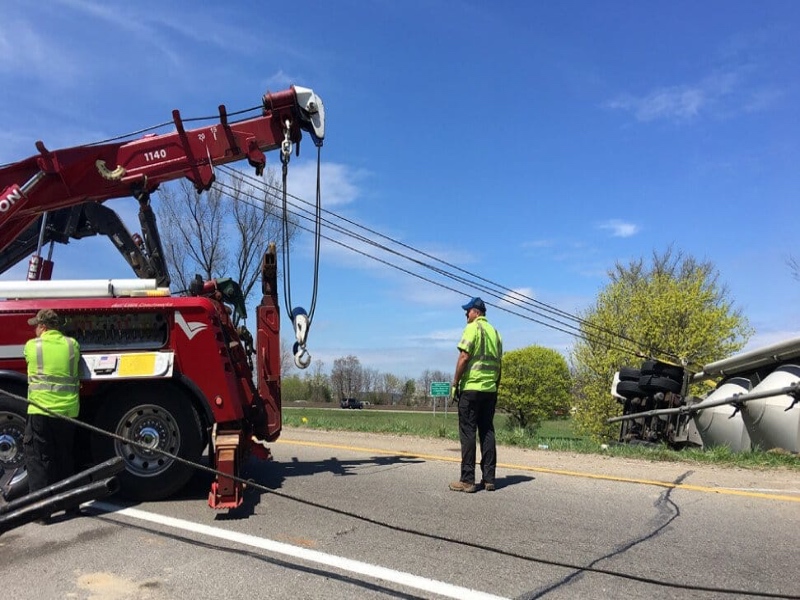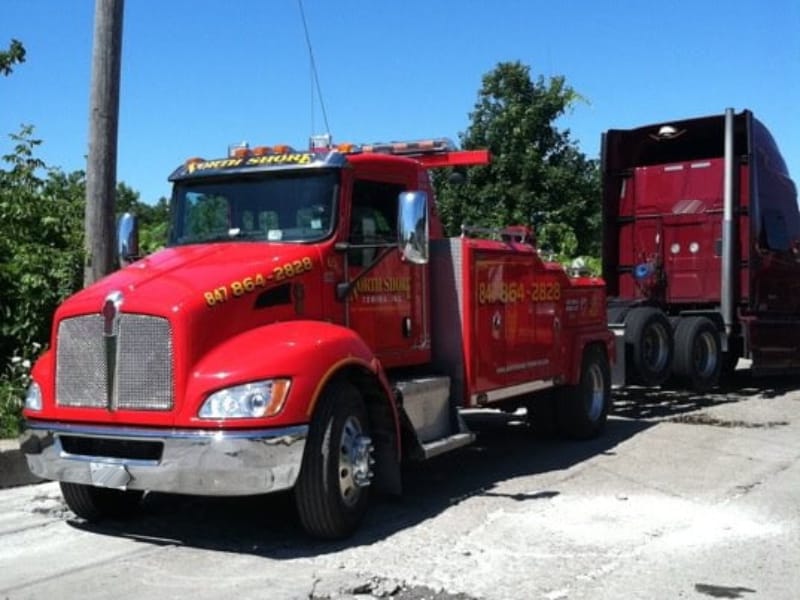Pulling Your Weight
Blowouts, overheating, and brake failure are often the result of exceeding towing capacity. During I-294 towing service calls, we see how overloading creates damage. Vehicles break down under pressure they weren’t designed to handle. That’s why we run the numbers before we tow.

Towing Capacity Is a Measured Limit
Towing capacity is the maximum weight a vehicle can handle behind it. This limit is based on engineering specifications and safety testing. We follow those numbers because guessing leads to failure. We see how important it is to know this figure ahead of time.
Factors We Use to Calculate Towing Capacity
We don’t rely on a single number. Several specs go into determining safe limits:
- Gross Vehicle Weight Rating (GVWR): The most weight the vehicle can support inside.
- Gross Combined Weight Rating (GCWR): Total weight of the vehicle and anything it tows.
- Tongue Weight: Pressure applied to the hitch, which affects steering and braking.
- Axle Ratio and Suspension Load: How the vehicle transfers power and supports the load.
- Braking System Load: How much braking force the tow vehicle can handle without losing control.
This calculation matters on every I-294 towing service call. We use it to decide what truck and gear to bring.
What We See When Towing Capacity Gets Ignored
During recovery calls, we’ve seen trucks stuck on uphill grades, engines pushed to failure, and trailer sway lead to collisions. One I-294 call involved a pickup pulling a loaded camper beyond its rating. The weight pushed the tires to blow, forcing the trailer to jackknife. That incident blocked traffic and totaled both vehicles.
Overloads add stress to transmissions, lead to overheating, and create loss of braking ability. These problems show up most when the driver has skipped the prep work.
How We Decide Which Tow Truck to Use
We plan every response based on load size and location. Towing isn’t one-size-fits-all. On I-294, conditions vary fast and require the correct unit from the start.
Our prep includes:
- Checking the vehicle weight and type
- Confirming the condition (stuck or driveable)
- Planning access on ramps, shoulders, or lanes
- Preparing recovery tools and load-specific equipment
Equipment We Bring Based on Vehicle Type
We use the following based on what’s involved in the I-294 towing service:
- Light-duty trucks for compact and mid-size vehicles
- Medium-duty for work vans or loaded half-tons
- Heavy-duty wreckers for semis, buses, and construction gear
This prevents strain on the wrong equipment. It also avoids risk to the load and to traffic around us.
What You Can Do to Stay Within Limits
You can lower the chance of a breakdown by checking specs ahead of any tow or haul. That includes:
- Reading your vehicle’s manual
- Weighing the trailer fully loaded
- Using the correct hitch setup
- Evenly distributing weight before departure
Sticking to these steps prevents common road failures.

North Shore Towing, Your Trusted I-294 Towing Service: We Calculate Before We Tow
Our I-294 towing service operates with facts, not guesswork. Towing capacity is part of every I-294 towing service job. We bring the right equipment, confirm weight limits, and prepare the proper truck to match the load.
At North Shore Towing, our I-294 towing service responds to breakdowns with calculated decisions that protect vehicles and reduce delays. We’ve done this long enough to know what happens when towing capacity is ignored. That’s why we build every job plan around it—every time.

